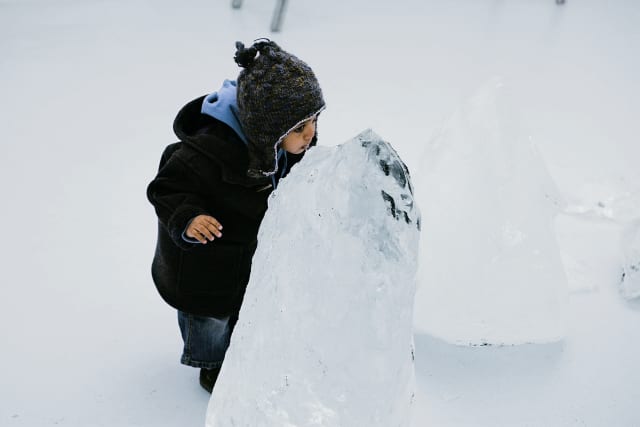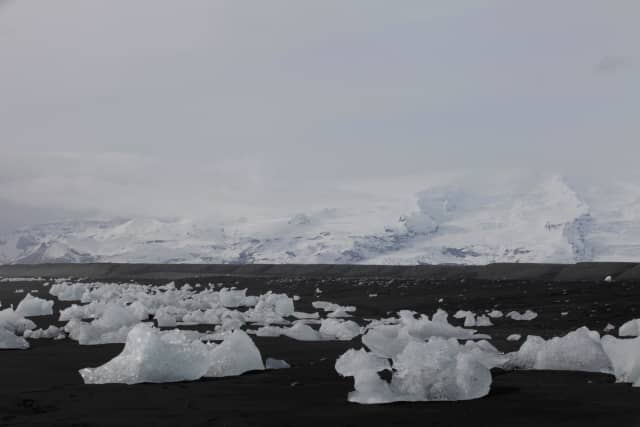Several blocks of ice from Vatnajökull, the largest glacier in Iceland, were removed from the glacial lake Jökulsárlón, into which Vatnajökull flows. Part of the ice is thought to have been formed around AD 1200. Weighing 6 tonnes in all, the blocks were transported to the Berlin gallery neugerriemschneider, where they were exhibited in a refrigerated space.
'It is a challenge to verbalise time itself, even though, paradoxically, talking takes time. Describing time in conversation tends to take away the duration from it, as it is mostly described as an idea or concept. For me, the idea of time becomes especially abstract when we consider the history of our universe, the vast time of deep cosmology, the geological time in the history of the planet, the history of the atmosphere, the history of mountains. Vatnajökull, the glacier from which the blocks of ice in Your waste of time come, formed some 2,500 years ago; the oldest ice that still exists in it is from around AD 1200. This span of time lies at the limits of comprehension.
But it is possible to stretch our frame of reference. When we touch these blocks of ice with our hands, we are not just struck by the chill; we are struck by the world itself. We take time from the glacier by touching it. In a sense, Your waste of time is a ‘waste of time’ because I shipped the ice across the world for it to be on view for a short period of time, after which it melts away – a nanosecond in the life of the glacier. Then there’s another way in which time is wasted: we take away time from the glacier by touching it. Suddenly I make the glacier understood to me, its temporality. It is linked to the time the water took to become ice, a glacier. By touching it, I embody my knowledge by establishing physical contact. And suddenly we understand that we do actually have the capacity to understand the abstract with our senses. Touching time is touching abstraction.'
(Olafur Eliasson)











